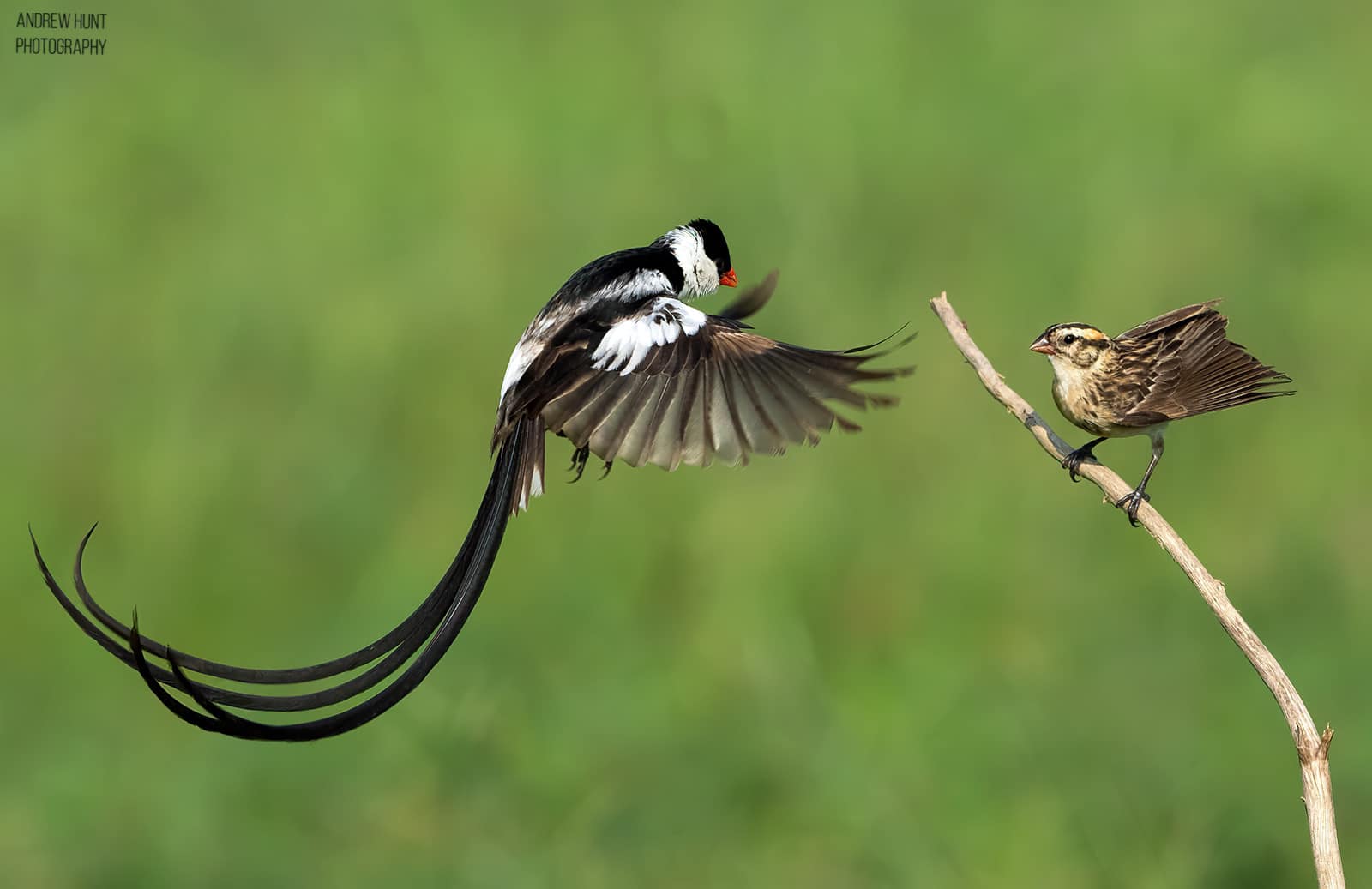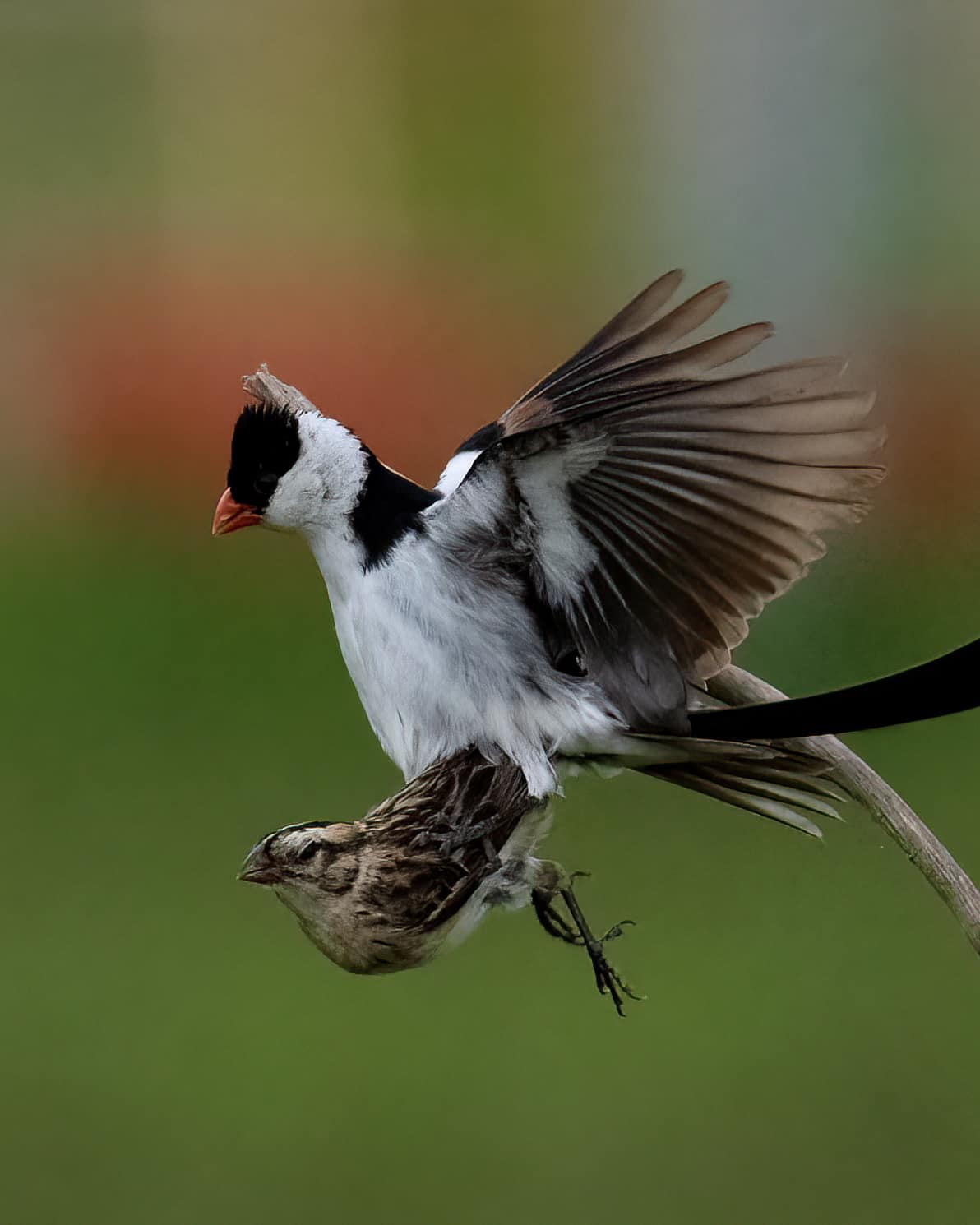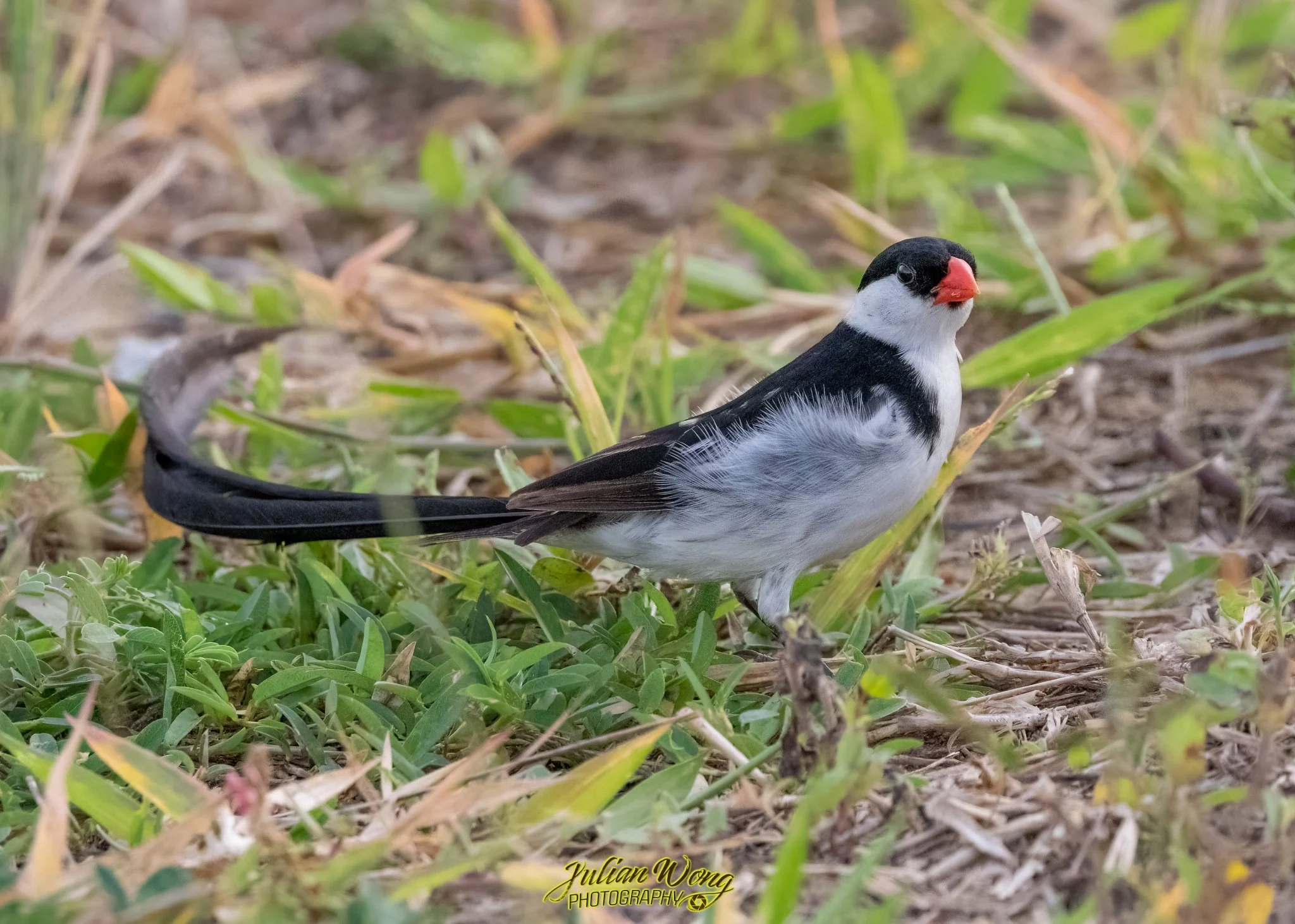Hundreds of birdwatchers flocked to Pasir Ris Farmway 3 in Singapore over the weekend to witness the mating ritual of a pair of Pin-Tailed Whydahs.
The Pin-Tailed Whydahs, a species regularly observed in the grasslands of northeastern Singapore, were seen engaging in a fascinating courtship dance at the grass patch.
The male Whydah birds, known for their distinctive long tails and bright red beaks, attracted more than 500 onlookers eager to capture the moment on camera.
In multiple videos captured by bird enthusiasts, the male bird can be seen fluttering in the air, singing and flicking his tail up and down while trying to catch the female’s attention during the dance.
Birds Engaged In A Courtship Dance In Mating Ritual
Last weekend, from 26 to 28 May 2023, numerous Facebook posts in the Singapore Wildlife Sightings and Bird Sightings groups reported sightings of Pin-Tailed Whydahs at Pasir Ris Farmway 3.
These birds are known to frequent the open grasslands of northeastern Singapore, as documented in a report by the National University of Singapore (NUS).

The enthusiastic crowd witnessed the captivating mating ritual between two Pin-Tailed Whydahs, as captured in the uploaded videos.

The male bird performed an enchanting mid-air “dance routine”, fluttering up and down, while the female observed from a tall perch.

The male’s striking red beak and long, mesmerising tail feathers added to his impressive appearance, creating a captivating scene for all who witnessed it.
Despite its brief duration, the enthralling dance exudes a romantic aura as the male bird serenades his courtship performance with melodic singing while maintaining eye contact with the female.

Who said chivalry was dead?
Upon receiving acceptance from the female, the male Pin-Tailed Whydah would stop his dance and proceed to mount her from behind, symbolising the completion of the mating process.
However, despite his persistent efforts, there exists a possibility that the female may decline the male’s advances and take flight.
In such cases, the male may pursue her and engage in another dance or patiently await another female bird to turn up.
Hundreds Gathered In the Heat to Catch Mating Process

Fortunately, despite a few anxious moments when the male unintentionally dislodged the female from her perch due to his over-enthusiasm, the pair successfully engaged in mating, much to the delight of the onlookers.
The captivating mating event took place on 28 May 2023, at around 6 pm, attracting many photographers and bird enthusiasts who were eager to witness the spectacle.

The bustling crowd stood in stark contrast to the typically serene ambience of Pasir Ris Farmway 3, an ulu part of Singapore that is not commonly frequented by many.
The campsite was abuzz with a throng of patient bird watchers, eagerly anticipating the birds’ courtship displays over three days.
According to one photographer’s estimate, the number of people present at the field reached approximately 300 on 27 May 2023, and over the past three days, around 500 birders flocked to the site to catch a glimpse of the sighting
Thanks to the persistent efforts of the bird-watchers and the Pin-Tailed Whydahs, numerous videos have been recorded showcasing the mating rituals of several other birds.
What Are Pin-Tailed Whydahs
Although Pin-Tailed Whydahs have been observed in Singapore since 1986, they are not indigenous to the island.
According to NUS, the Pin-Tailed Whydah, a songbird measuring approximately 13cm long, is native to Africa.
This species is commonly spotted in South Africa and can also be seen in Zimbabwe, Mozambique, as well as parts of Namibia and Botswana.

While male and female Pin-Tailed Whydahs can be challenging to distinguish outside of their breeding season, they display striking differences during mating season, which falls in the months of June, July, and August.
During this period, the male undergoes a remarkable transformation, showcasing white feathers, a vibrant red bill, a black cap, and a flowing black tail measuring about 20cm long.
While their mating dance is captivating to witness, it is noteworthy that Pin-Tailed Whydahs employ a less favourable breeding strategy known as brood parasitism.
This means they lay their eggs in the nests of other bird species, such as Waxbills, and manipulate the host birds into raising their young as their own.

Once hatched, the Whydah chicks possess a wide-open bill resembling that of the host species, particularly the Waxbills.
However, the Whydah chicks are larger and more demanding in their begging behaviour than the Waxbill chicks.
This often leads to the unfortunate outcome of the host parent prioritising the feeding of the Whydah chicks, resulting in the neglect and eventual demise of their own Waxbill offspring.
Would you be jailed for being half-naked in public? Well, the answer will shock you. Seriously. Watch this to the end and you'll understand:




